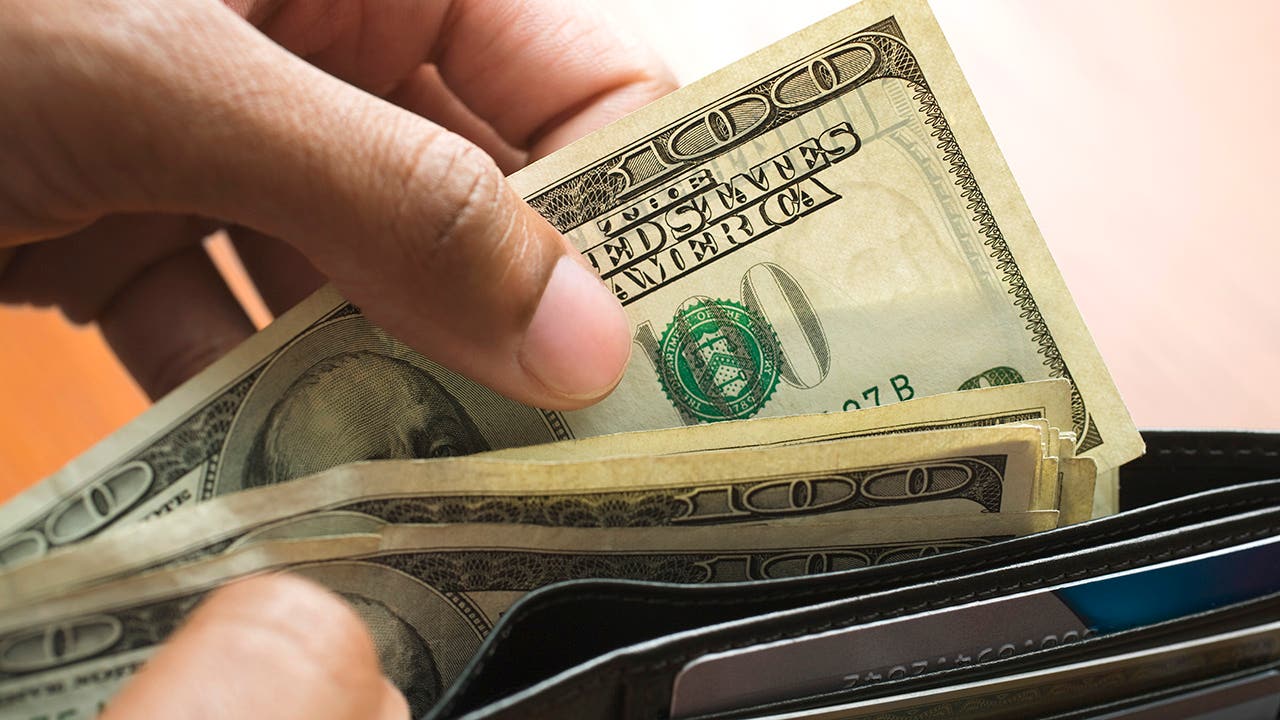10 ways to save $100 more each month




Struggling to save? You’re not alone. A 2025 Bankrate survey found that 59 percent of U.S. adults are uncomfortable with their level of emergency savings, while 27 percent have no emergency savings at all. However, building a savings buffer doesn’t have to be daunting.
If you’re unsure where to start your savings journey, breaking down a larger goal into mini-goals like saving $100 monthly can be helpful. With a smaller $100 goal mapped onto a pre-determined schedule, you’ll have an extra $1,200 in the bank at the end of the year if you can stick to it.
Ready to get started? Here are 10 effective tips to help you save $100 a month without drastically altering your lifestyle.
1. Avoid bank fees
Bank fees can quietly eat into your balance if you’re not careful. The average overdraft fee in the U.S. is $27.08, according to our latest checking account survey, and using an out-of-network ATM can set you back $4.77 per transaction.
You could save $50 a month or more by being mindful of common charges. Avoid dealing with financial penalties by making these adjustments:
- Set up mobile bank alerts: Many mobile banking apps can send alerts when your account balance is low or when an upcoming payment is scheduled. This helps you avoid unexpected overdraft fees.
- Stick to in-network ATMs: Use your bank’s mobile app or website to find nearby in-network ATMs or opt for cash back at grocery stores to avoid ATM fees altogether. Alternatively, opt for a bank that offers reimbursement for ATM fees, like Ally Bank.
- Watch out for hidden fees: Monthly maintenance, money transfer and minimum balance fees can add up. If your bank charges too many fees, consider switching to a no-fee checking account.
2. Open a high-yield savings account
Is your savings account offering less than 1 percent interest? If so, you’re missing out on potential earnings. In 2025, many high-yield savings accounts offer annual percentage yields (APYs) of around 5 percent.
To put this in perspective, if you have $10,000 in a standard savings account with an APY of just 0.01 percent, you’d earn only $1 in interest over the year. But if you put that same amount in an account with a 5 percent APY, you’d earn $500. That’s a significant difference, and it can help accelerate your savings.
Online banks like Ally Bank often offer the highest yields due to lower overhead costs. If you’re comfortable with online banking, opening a high-yield savings account could be an easy way to grow your savings faster.
3. Cut down on impulse purchases
Impulse purchases can drain your budget before you even realize it. The next time an unplanned buy tempts you, try these tactics:
- Weigh the pros and cons: Write out a list of pros and cons for something you want to buy that isn’t necessary. Taking the time to justify a purchase can help determine whether it’s worth the money and help you understand the consequences of your decision.
- Build structure around your purchasing behavior: Given the ease of online ordering, imposing more guardrails and rules can slow your spending. For example, you may want to buy only products made in the USA or sustainably manufactured items. These additional requirements help you align your consumption with your values and slow the purchase process.
- Phone a friend: Commit to report your impulse buys to a trusted accountability partner, even if it’s just a journal. Treat it like an exercise tracker. If you’re ashamed to report it, don’t buy it.
- Skip the cart: If you have to carry all your purchases in your arms as you walk around the store, you’re less likely to buy more.
- Avoid social media: Social media ads are tailored and personalized to you and your interests, making them extra enticing. Consider a social media break if you’re easily influenced to overconsume after scrolling through your feeds.
4. Reduce your utility expenses
You can lower your utility bills by making a few energy-efficient changes. According to the U.S. Department of Energy, reducing your energy consumption with energy-efficient upgrades could save you $200 to $400 each year. Here are a few quick wins:
- Time your appliance use: Run your larger appliances, such as your dishwasher, during the evening, when reduced energy rates are likely to be in effect.
- Add insulation to your home: Insulating materials can help you cool or heat your home more efficiently.
- Air-dry your clothes: Air-drying your clothes does more than reduce energy costs. You can also help prolong the life of your garments by skipping the clothes dryer.
- Seal leaks: Add spray foam or weather stripping around drafty windows and doors to stop warm air from leaking in during the summer or cold air from entering during the winter.
- Unplug unused electronics: Even if your device isn’t on while plugged into an outlet, it’s still drawing energy from the grid — and costing you money. According to the U.S. Department of Energy, unplugging your devices when not using them could save you around $100 a year.
5. Set up automatic bill payments
Late fees can add up quickly, especially if you’re juggling multiple bills. According to the Consumer Financial Protection Bureau, U.S. households collectively spend over $14 billion each year on credit card late fees alone.
By setting up automatic payments, or auto-pay, you can avoid late fees and may even qualify for discounts. For instance, some student loan services offer a 0.25 percent interest rate reduction when you enroll in autopay. Car insurance, internet and cell phone providers may also provide monthly auto-pay discounts.
To avoid overdrawing your account, monitor your balance regularly or use an account that doesn’t charge overdraft fees.
6. Rethink your entertainment
If entertainment is one of your most significant budget categories, you don’t have to stop attending shows or other community events to save money. Instead, you can focus on no-cost experiences.
Check out your local community newspaper or city social media accounts to stay up to date on events. Night markets, fundraisers, pop-ups and other events are often free to attend.
7. Consolidate and audit streaming services
With multiple streaming platforms on the market, it’s easy to overspend on entertainment. U.S. households spend an average of $93 monthly on streaming services like Netflix or Hulu.
Take stock of your subscriptions and decide which ones you need. If you’re having trouble locating your subscription services, consider using an app that finds all your subscriptions and even cancels them for you. If you cancel and miss a subscription service, you can always sign up for it again later.
8. Use apps to find the lowest gas prices
Average U.S. gas prices have dropped to $3.006 per gallon as of Dec. 2024, (8 cents less than a year ago, according to the U.S. Energy Information Administration). Still, fueling your car still takes a toll on your wallet. J.D. Powers reports that the average American family pays about $5,000 per year on gas — about 2.24 percent of their total monthly income.
Use these tips to reduce your fueling expenses:
- Use apps to find lower prices: Tools like GasBuddy and Waze can help you locate the cheapest gas stations near you. GasBuddy even offers a trip cost calculator to estimate how much fuel you’ll need for a road trip.
- Time your gas fill-ups: Gas prices tend to be lower on Mondays and Fridays, which can shave off a few extra dollars each week.
- Carpool: Consider putting a carpool together for work commutes, sports practices and other regular trips.
- Use alternative forms of transportation: If your local infrastructure allows, consider biking or walking for short errands over driving.
9. Shop smarter for groceries
The U.S. Department of Agriculture reports that U.S. consumers spent around 11 percent of their discretionary income on food. If you want to spend less on groceries and food so you can hit a savings goal, consider some of the suggestions below:
- Meal plan: One of the best ways to avoid impulse purchases at the grocery store is by creating a meal plan ahead of time. By meal planning, you can make a list of exactly what you need so you don’t buy unnecessary items.
- Focus on generic store brands: According to Consumer Reports, Store-brand items usually cost 20 to 25 percent less than name-brand items for the same item.
- Use online and physical coupons: Take advantage of discounts, coupons and browser extensions like Honey or Rakuten, which can automatically apply coupon codes and find deals when shopping online.
- Sign up for loyalty programs: You can get unique, exclusive deals when you’re part of a grocery store loyalty program.
- Compare unit prices: The price on the shelf doesn’t tell the entire story. Check the unit price to see which product offers the best value for the money. If the store doesn’t explicitly advertise the unit price, you can download free apps that do the math for you.
- Buy in season: Buying fruits and vegetables in season is typically more economical because they’re more readily available and, therefore, cheaper.
10. Tackle high-interest debt
Paying off high-interest debt, such as credit cards, can free up more of your income for savings. According to a 2024 Bankrate Credit Card Debt Report, 36 percent of U.S. consumers have more credit card debt than emergency savings.
You’re paying extra interest on top of your principal when you carry revolving debt with high interest. If you only make minimum payments, you’ll pay even more toward interest. As you tackle your high-interest debt, you can free up excess interest payments and put them toward savings.
The bottom line
Saving more money doesn’t mean you have to give up what brings you joy. However, it requires you to be more self-aware about why and how you spend money. To save an extra $100 each month, you can employ multiple strategies, like working to reduce the amount of energy you use in your home or getting rid of unused subscriptions.
Making these changes will add up over time and allow you to strengthen your savings. Jumpstart your progress with one of the best high-yield savings accounts and watch your savings balance grow.





